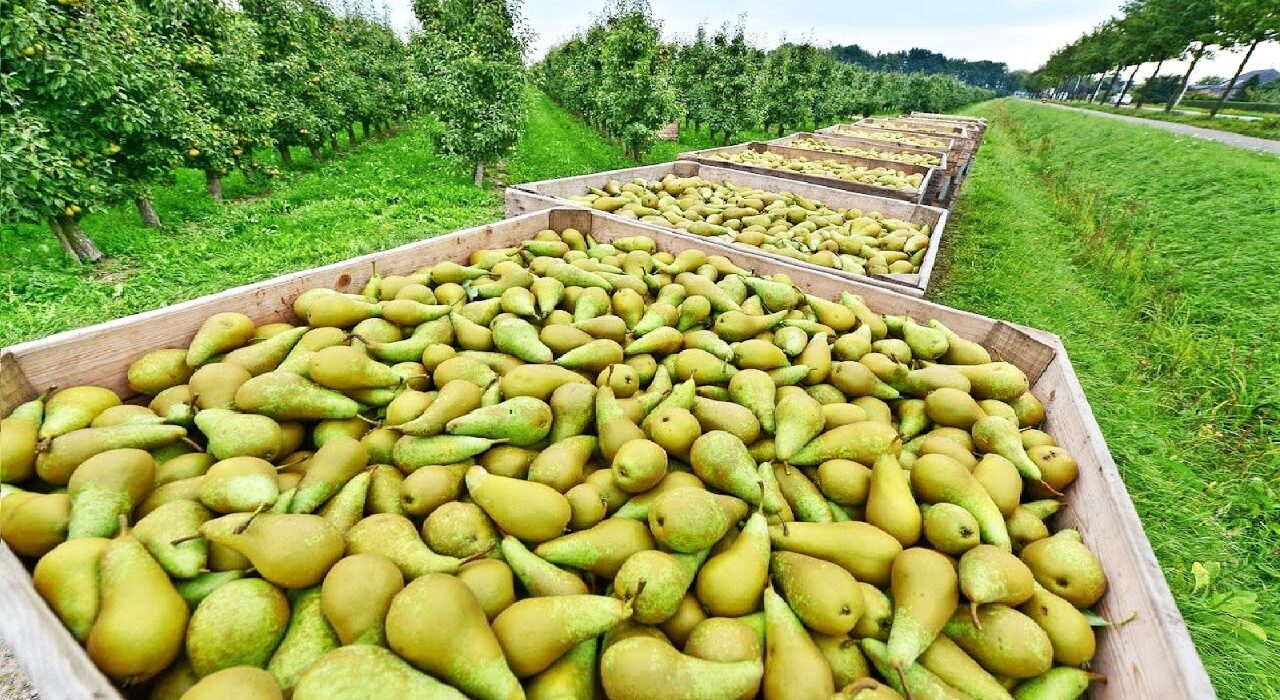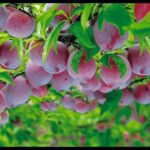Pears, a nutritious and juicy fruit, are becoming an increasingly popular crop in Kenya. Belonging to the Rosaceae family, pears are mainly cultivated in cool, high-altitude regions of the country, including Limuru, Kimende, Molo, Naivasha, Meru, parts of Western Kenya, and Nyeri. Due to their rising demand both locally and internationally, pear farming presents a great opportunity for farmers looking to diversify their fruit crops.
In this article, we will explore the key aspects of pear farming in Kenya, from ecological requirements to planting, pest management, and market potential.
Ecological Requirements for Pear Farming
Pears thrive in areas with specific climatic and soil conditions. Understanding these requirements is essential for successful farming:
- Soil: Pears grow best in deep, fertile, and well-drained soils with a pH of 6.0-7.0. Loamy soils enriched with organic matter are ideal for proper root development and fruit production.
- Rainfall: The crop requires well-distributed rainfall throughout the year, though it can tolerate dry periods with the help of irrigation.
- Sunlight: Pear trees need 6-8 hours of direct sunlight daily for optimal growth and fruit formation.
- Temperature: Pears grow best in temperatures between 15°C and 32°C, with cold areas having lower chilling requirements, making them perfect for cultivation in high-altitude regions of Kenya.
Propagation and Planting
There are two main methods for propagating pear trees: vegetative propagation and seed propagation. However, vegetative propagation is the most recommended and widely used method, especially grafting, which ensures the growth of superior varieties that are more resistant to diseases and produce quality fruits.
- Spacing: Pear trees should be spaced either 5m x 6m, 4m x 6m, or 8m x 4m apart, depending on the variety and land size. With this spacing, an acre can accommodate 100-200 pear trees.
- Planting Holes: The planting holes should be dug to a depth of 2 feet with a diameter of 60cm x 60cm. Before planting, the topsoil should be mixed with well-decomposed organic manure to improve soil fertility.
After planting, it is advisable to mulch the base of the trees to retain moisture and suppress weed growth. Cover crops can also be planted around the trees to prevent soil erosion and improve nutrient availability.
Thinning
Thinning is a crucial practice for ensuring that the pear trees produce high-quality fruits. It involves removing excess fruits from the tree, allowing the remaining fruits to grow to their desired size and quality. This practice also helps prevent overcrowding of fruits, which can lead to disease outbreaks.
Pests and Diseases Affecting Pears
Pears, like other fruit crops, are vulnerable to various pests and diseases. To achieve high yields and maintain tree health, farmers must be vigilant and employ effective pest and disease management strategies.
Common Pests:
- Fruit flies: These pests cause significant damage by laying eggs inside the fruit, leading to fruit drop.
- Aphids: Aphids suck sap from leaves and young shoots, stunting growth and causing leaf curling.
- Red spider mites: These tiny pests damage the leaves by feeding on plant sap, leading to defoliation.
- Beetles and moths: These pests cause damage to the tree bark and young shoots.
Common Diseases:
- Powdery mildew: This fungal disease affects leaves, shoots, and fruits, leaving a white powdery residue.
- Collar rot and crown rot: These diseases cause root damage and wilting of the tree.
- Fire blight: A bacterial infection that causes the tree to appear scorched, with blackened leaves and shoots.
To control these pests and diseases, farmers should practice proper field hygiene, regularly inspect the trees for early signs of infestation, plant resistant varieties, and use recommended pesticides, fungicides, and insecticides as needed.
Maturity and Harvesting of Pears
Pear trees take about 3-5 years to start fruiting, although grafted varieties can start producing fruits as early as 2 years after planting. Once the trees mature, a well-established pear tree can produce approximately 180 kilograms of fruit annually.
Harvesting is done manually by hand-picking. It is important to handle the fruits carefully to avoid bruising, which can reduce their marketability.
The Market for Pears in Kenya
Pears have a wide and growing market in Kenya. Their popularity stems from their numerous health benefits, including being a good source of vitamins, fiber, and antioxidants. The market for pears includes:
- Local Market: Pears are sold in grocery stores, supermarkets, and open-air markets. They are also in demand in institutions such as schools, hospitals, hotels, and restaurants.
- Export Market: There is also potential for exporting pears to international markets, especially in the Middle East and Europe, where demand for fresh fruits is high.
During peak seasons, a single pear fruit can be sold for between Kshs 10 and 20 depending on the market and region. This price can rise significantly during off-peak seasons when supply is lower.
Pear farming in Kenya offers a promising opportunity for farmers, especially those in cooler highland areas. With proper ecological conditions, effective pest and disease management, and access to the growing local and international markets, farmers can reap substantial benefits from this fruit crop. As the demand for fresh fruits continues to rise, investing in pear farming can be a profitable venture for small-scale and commercial farmers alike.





